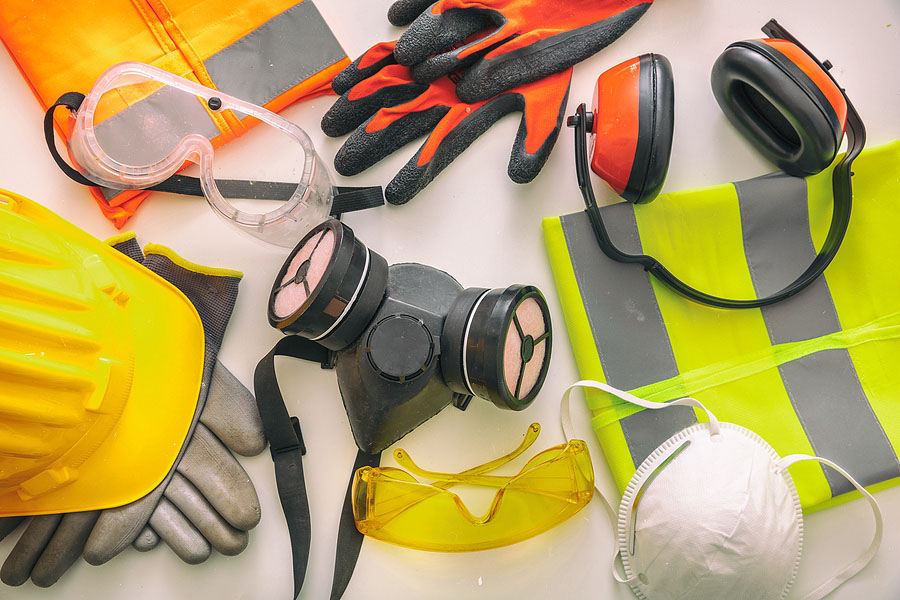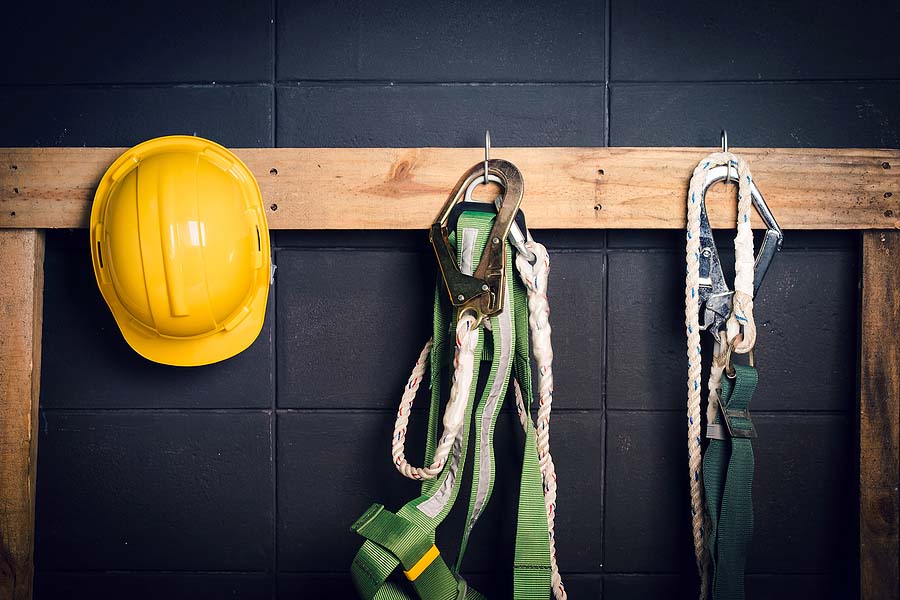How to Store and Care for PPE

Contrary to what you might think by looking at a construction worker’s car, the proper way to store your personal protective equipment (PPE) is not to shove it in the first available space and leave it there until you need it again or leave it on the job site where it will be exposed to the elements. In reality, each type of PPE, from hard hats to safety glasses, to safety harnesses, has specific requirements for how they are treated when not in use. Construction was used as an example because the conditions sometimes tend to be a bit harsher, and construction workers don’t usually have access to lockers or other consistent storage areas. The following storage and cleaning rules apply to all PPE users, regardless of industry or trade.
Let’s look at the requirements are for each type of PPE, keeping in mind that your first action should be to check the manufacturer’s suggestions for cleaning and storage, as it may not agree with the generalized methods below.
Safety Harnesses
Let’s start with safety harnesses because this one has great potential to lead to death if you need it to work and something goes wrong. If your storage method for your harness involves leaving it in a heap to freeze overnight and thaw in the morning, to be constantly subjected to the sun's harsh ultraviolet rays, or to sit in a gang box where any number of tools can slice it, there is a good chance that when it comes time to save your life, it could fail.

For starters, your harness should be kept in a cool, dry place when not in use. Heat, cold, or constant exposure to sunlight could cause damage that may not be visible. Harnesses should be hung up to avoid physical damage from weight being placed on them or from sharp objects slicing them.
To clean your safety harness, which you should do regularly, use a damp sponge with only water to wipe away anything that may be on the surface. Next, use a mix of dish soap and water to work up a lather on the straps. Be careful to avoid anything with bleach, abrasives, or chlorine. Do not soak the straps. To finish, wipe the harness down and hang it to dry.
Hard Hats
For hard hats, you also want to make sure you store them in a location where they cannot be crushed or damaged by other objects. Hard hats, like pretty much all PPE, must be kept out of direct sunlight to avoid being broken down by the sun’s ultraviolet rays. Avoid any areas where the hard hat can be exposed to high heat.
Again, mild soap and water are the best way to clean your hard hat; however, if you have difficulty removing a substance from some part of the hard hat, you should replace that component.
Safety Glasses
Sometimes safety glasses are so readily available that people don’t put a lot of effort into protecting them. However, a scratch on the lens can be distracting and even cause you to miss something important in an intricate operation. Bending, cracking, or weakening of the frames could cause failure at a crucial moment. Where possible, store your safety glasses in a protective case or microfiber pouch and keep them out of direct sunlight.
Properly cleaning your safety glasses is crucial. Blow off large debris before rinsing the lenses either under a faucet or with a cleaning spray (sometimes employers provide lens cleaning wipes for this purpose). Wipe both sides of the lens gently. Dry with a microfiber cloth. Do not use soaps or other cleaners not designed for lens cleaning.
Hearing Protection
One of the biggest concerns with hearing protection, as opposed to some other types of PPE, is the potential for infection that could come with dirty equipment. Disposable hearing protection eliminates the need for cleaning or storage but is not always available or, frankly, the best option. If using disposable options, still be sure to check them for dirt or debris before placing them into your ear.
For reusable plugs, wash with water and mild soap (refer to the manufacturer’s instructions to ensure this is allowed – soap may not be) and set them out to dry. More permanent pieces of equipment, such as headbands or headphones, should be wiped with a wet cloth and, where allowed, mild soap to keep them clean. Don’t forget to inspect these and replace them (or any component that can be replaced separately) if damaged. Make sure to store these types of hearing protection in such a way that prevents bending, breaking, and exposure to direct sunlight.
Respirators
What piece of PPE has gained greater recognition in the past year and a half than the good ol’ respirator? Suddenly, everybody knows what an N95 is, or what PPE is for that matter. Still, it only took one trip through the grocery store during the pandemic to see that many people didn’t know how to properly wear a respirator, let alone care for it and clean it. Luckily, there are disposables. For these, no storage or cleaning is required.
Though, many more types of respirators are in use in work settings. Just like other types of PPE discussed above, respirators should be stored away from dust, sunlight, extreme temperatures, moisture, and chemicals. Any substance, whether general dust or chemical, that gets inside the mask will be breathed in concentrated amounts when the respirator is worn. Many respirators come with a plastic bag for storage. Be sure to use it. When storing, do not leave the respirator somewhere where it can become damaged or misshaped. Any change to the respirator’s shape could affect the seal you had during your fit test.
When cleaning a respirator, wash only the reusable parts with a mild, disinfecting soap, rinse it thoroughly and dry it. Do not leave it to dry on its own, do not use any harsh soaps or chemicals to clean it, and do not use any abrasives.
Conclusion
Cleaning and storage of PPE are just as crucial as the way you wear it. Damage done by improper storage or cleaning could be invisible to the naked eye, yet no less dangerous than visible damage. Don’t forget, you’re counting on these pieces of equipment to save your hearing, your vision…your life.



